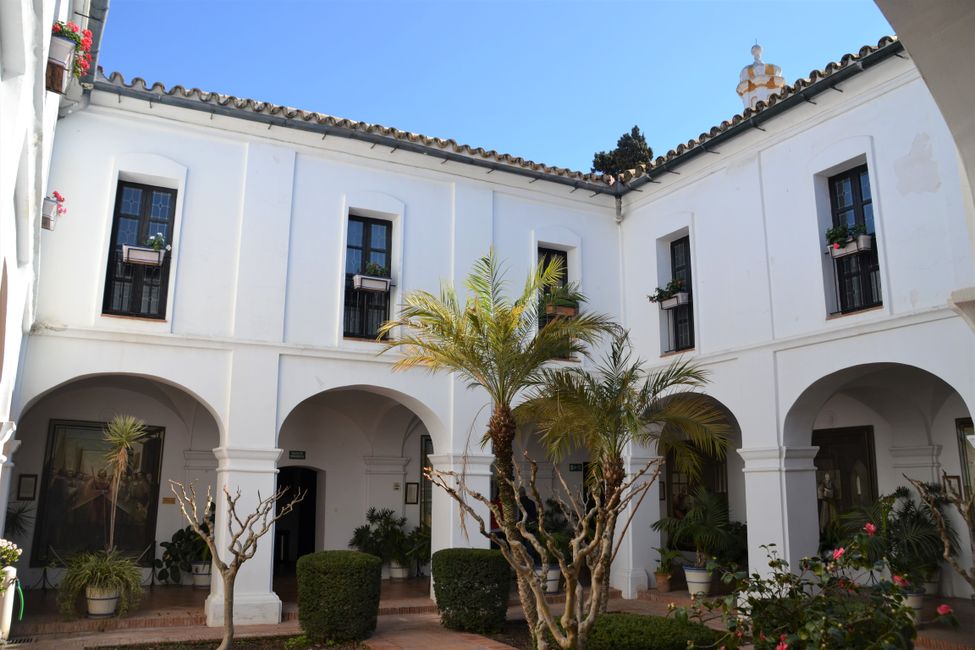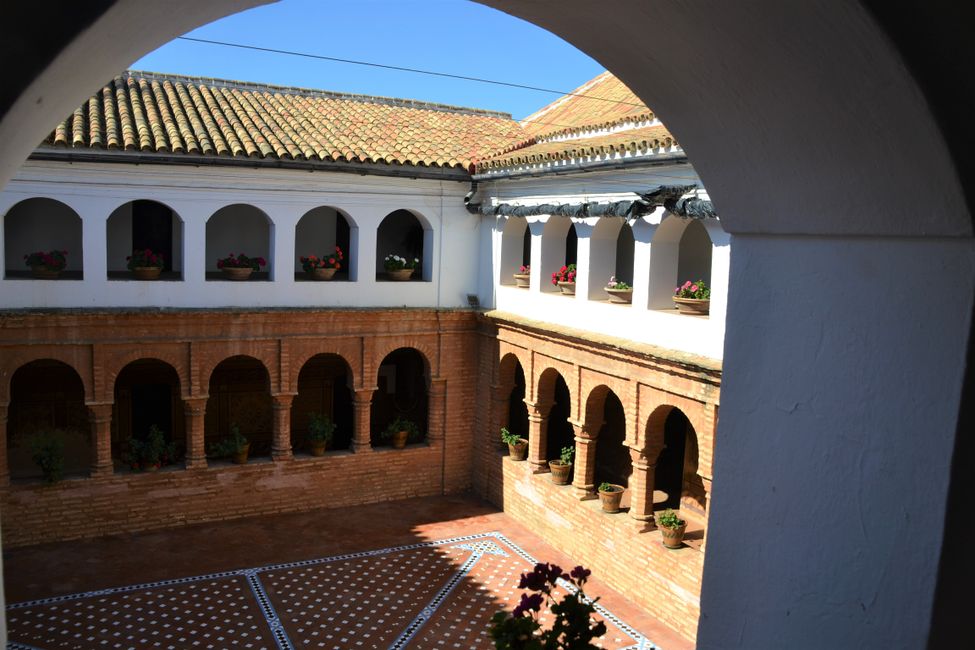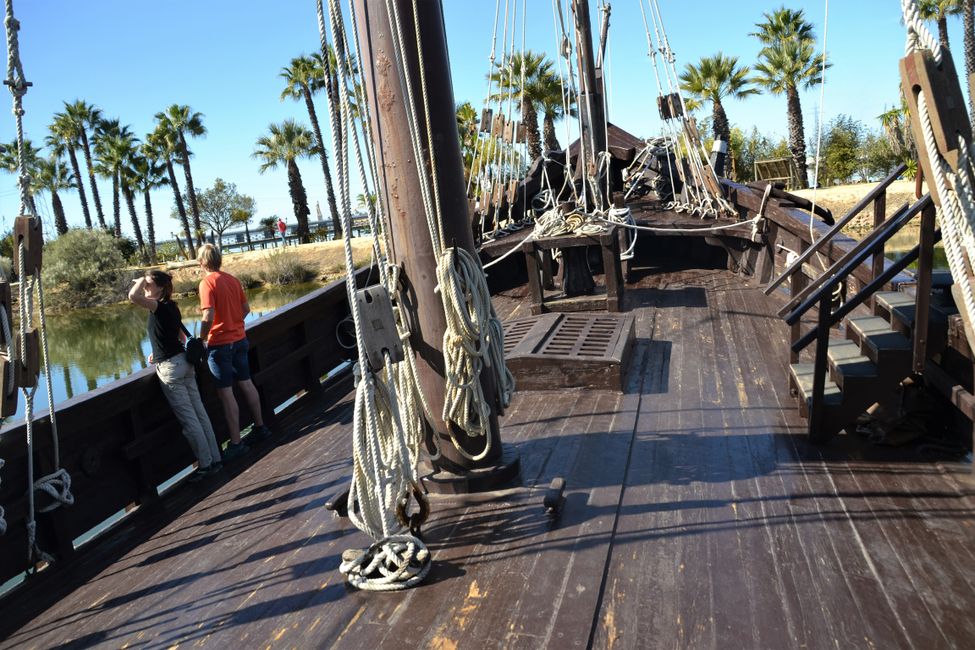
querfeldein
vakantio.de/querfeldein
#74 Following in the Footsteps of Christopher Columbus
प्रकाशित भइल बा: 23.02.2022









न्यूजलेटर के सब्सक्राइब करीं
February 17, 2022: Huelva, La Rábida
J. Christopher Columbus was an Italian from Genoa who did not want to become a weaver like his parents, so he became a sailor. He had a shipwreck off the coast of Portugal and settled there, got married, and had a child. But he had a vision. Knowing that the Earth is round, he was convinced that you could reach Asia by sailing west. He wanted to try it out. Unfortunately, he lacked everything: he had no money for provisions, no crew, and no ship. He asked the Portuguese king for support, but didn't receive any.
You might be wondering what this Italian, who lived in Portugal, has to do with us in Spain. Here's the connection. Columbus had heard of an influential monk who was also a sailor and had high esteem with the Spanish kings. This monk lived in the La Rábida monastery near Huelva, Spain. The monastery is very well preserved and can be visited. There are large paintings in one of the rooms depicting scenes from Columbus's time spent here. You can visit the dining room where Columbus ate with the monks. You can also admire one of the small bedrooms and the beautiful cloister. In one room, Columbus convinced the monks of his plans and then, together with them, concocted plans to persuade the kings. For that, they needed evidence. At that time, maps were not freely accessible to everyone, as there was no Google Maps yet. However, Columbus's father-in-law owned a large collection of sea charts, as he lent money to sailors on Madeira who often left sea charts as collateral. With this evidence, the monks and Columbus convinced the kings of Spain to finance the expedition.




However, the area around La Rábida did not only contribute to the "discovery" of America through the persuasion of the monks. Most of the crew and two of the three ships came from the surrounding villages. The three ships have recently been reconstructed using original techniques and are now located near the monastery in the harbor of a museum. You can even board them and feel like one of Columbus's sailors.





With these three ships and 80 people on board, Columbus set sail in August 1492. They first sailed to the Canary Islands, where they took a one-month repair break. From there, they navigated into the unknown, to a place where no one had been before, at least not that they knew of. After a month at sea, the crew became tired and hopeless and wanted to turn back. Columbus convinced them to continue for a few more days, and luckily, the next day, they encountered land, an island in the Caribbean. The encounter with the indigenous people was peaceful. Because the largest ship had run aground on a reef, they used its wood to build the first European settlement in America. Columbus returned to Spain with exotic plants and animals and a lot of gold and was celebrated and honored there almost like a king. The museum provides a good insight into the life of Christopher Columbus and this first great journey with the discovery of America. If the story were to end here, it would be a peaceful one. However, the subsequent voyages to America were no longer peaceful encounters with the indigenous people. Nevertheless, the monastery portrays Columbus as a kind of savior of the American continent. In the monastery, there is a room where all the flags of the countries of South, Central, and North America hang, and each one has a small box of soil from these countries. The audio guide said that in this room and in this monastery, the peoples of these countries are united. It was said that Columbus had brought the peoples of these countries together and made them into one people who now speak with one voice, and that this monastery is also a monastery for the peoples of all the countries of the Americas. The fact that Columbus's discovery led to a cruel time of colonization was not mentioned with a word in the monastery or the museum. But this is ultimately an exhibition about Christopher Columbus and not about colonization. This is always the problem in science, which creates new knowledge and enriches humanity but can also be used for evil purposes.
The province of Huelva feels a connection to America because Christopher Columbus set out from here with a large number of its inhabitants to "discover" America. As stated in a tourist brochure, America seems somehow closer here.
Day 125 - Total Tour 8,210 km
---- Subscribe ----
If you would like to subscribe to our blog, you can either sign up with Vakantio and click on subscribe or send us a message and we will add you to our own distribution list. Of course, we also welcome feedback!
Mail: querfeld2@gmail.com
न्यूजलेटर के सब्सक्राइब करीं
जबाब

यात्रा के रिपोर्ट स्पेन के ह बा।
